Order Management Case Study
Building pharmaceutical order processes with role-based workflows
Project Type: Progressive Web App
Duration: 2 months
Role: UX/UI Designer
Team: Ismail Ozger, Lead Designer
Project Overview
In this case study, we explore how we created Order Management System as part of the CRM application. The system is used by three different types of workers: Medical Sales Reps (MSRs), Area Sales Managers (ASMs), and Area Trade Managers (ATMs). Each group has their own way of using the system.
The project aimed to build a system that makes it easy to enter orders and track inventories. We focused on creating a smooth process for order approvals and helping users see what items were in stock at different warehouses. All these features were designed to make the system easy to use and efficient for everyone.
Note: Some findings, results, and screens shown here have been changed to protect private company information. We made these changes to follow our legal agreement (NDA) guidelines.
The Challenge
- Complex order entry process requiring multiple steps and manual data entry
- Limited visibility into pharmacy purchase history and available promotions
- Lack of role-specific dashboards and analytics
Project Goals
- Implement a role-based permission structure aligned with business rule.
- IOptimize approval workflows for Area Sales Managers
- Enhance warehouse-level analytics for Area Trade Managers
Research Methodology
User Interviews
My teammate Ismail Ozger and I conducted in-depth interviews with medical sales representatives, area sales managers and area trade managers to understand their workflows and pain points.
Usage Analysis
Analyzed 6 months of system usage data to identify patterns, bottlenecks, and opportunities for improvement.
Contextual Inquiry
Observed users in their natural work environment to understand real-world usage scenarios and challenges.
Findings
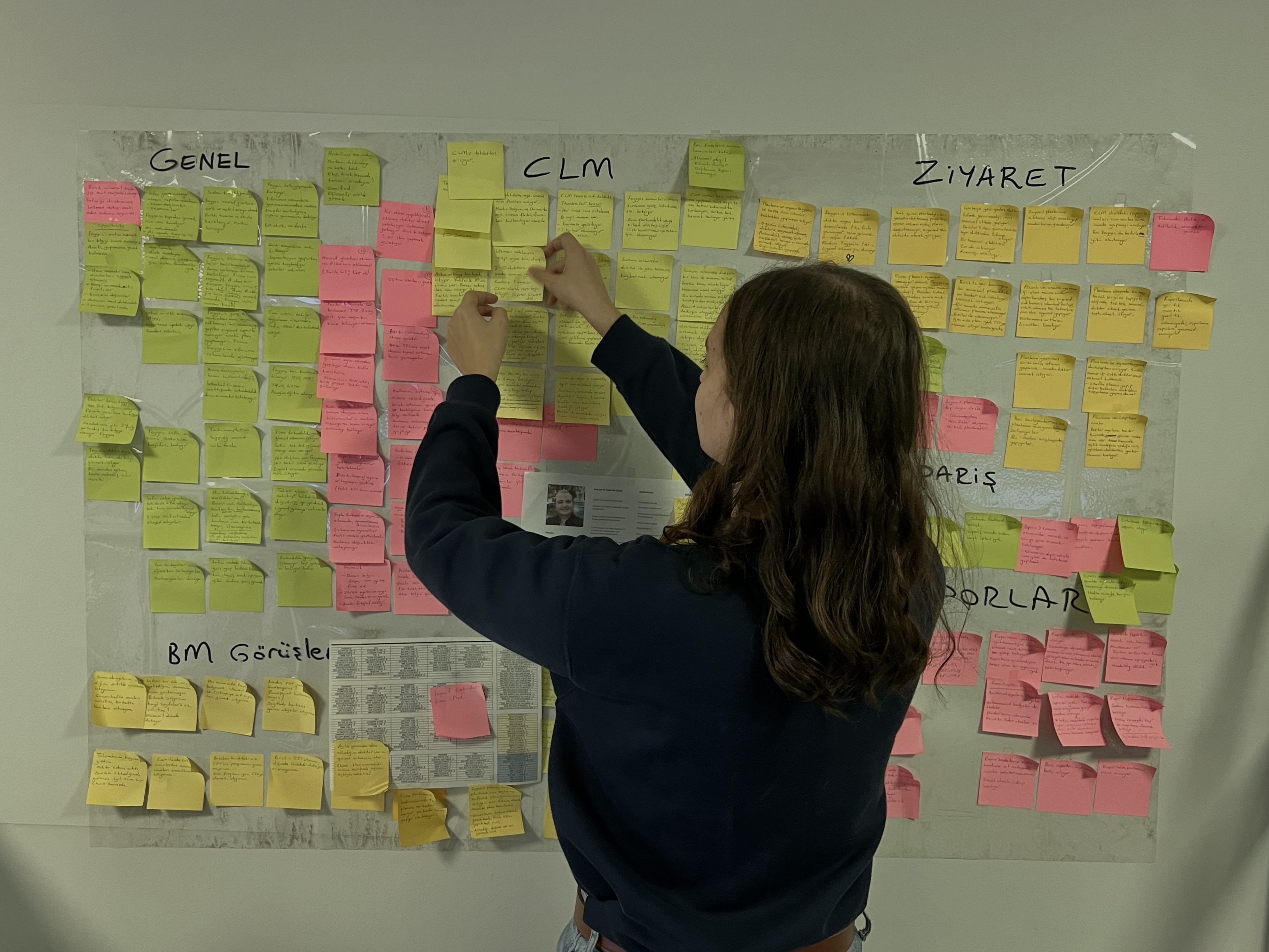
- Current order process takes an average of 8.5 minutes per order. With improved workflows and automation, this could be reduced to 3-4 minutes.
- Order errors occur in approximately 12% of submissions, primarily due to manual entry issues and lack of validation checks.
- Users report 65% satisfaction with current visibility into order status and inventory levels, indicating significant room for improvement.
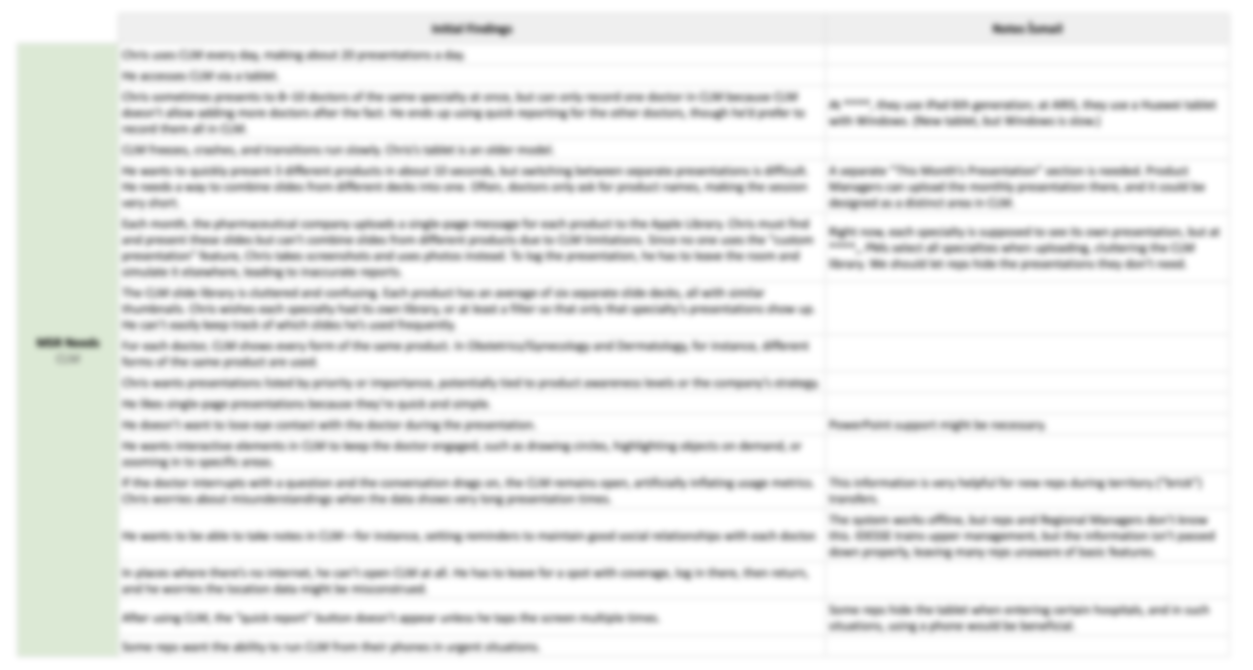
Personas
Medical Sales Rep (MSR)
Field-based sales professional
Goals
- Efficiently place orders for pharmacies
- Track order status and history
- Identify nearby sales opportunities
- Maximize sales and meet targets
Pain Points
- Difficulty accessing pharmacy purchase history
- Limited visibility into order status
- Time-consuming order entry process
- Challenges identifying optimal promotions
Key Needs
Area Sales Manager (ASM)
Team leader overseeing MSRs
Goals
- Monitor team performance and order metrics
- Efficiently review and approve orders
- Identify trends and opportunities
- Support team members in meeting targets
Pain Points
- Lack of consolidated team performance view
- Time-consuming approval processes
- Difficulty tracking pending approvals
- Limited insights into team activity patterns
Key Needs
Area Trade Manager
Regional operations manager
Goals
- Monitor warehouse-level order metrics
- Track inventory levels and stock duration
- Analyze product performance by warehouse
- Optimize warehouse operations and distribution
Pain Points
- Limited warehouse-specific analytics
- Difficulty tracking free goods distribution
- Lack of real-time inventory visibility
- Challenges in forecasting stock requirements
Key Needs
Workflows
Medical Sales Representatives:

Area Sales Manager:

Area Trade Manager:

Design Process
Design Approach
Our design process followed a user-centered approach, focusing on the specific needs and pain points of each persona. We began with low-fidelity wireframes to establish the core functionality and information architecture, then progressed to high-fidelity mockups and interactive prototypes.
Throughout the process, we conducted regular user testing sessions with representatives from each persona group to validate our design decisions and gather feedback for iterative improvements.
Final Designs

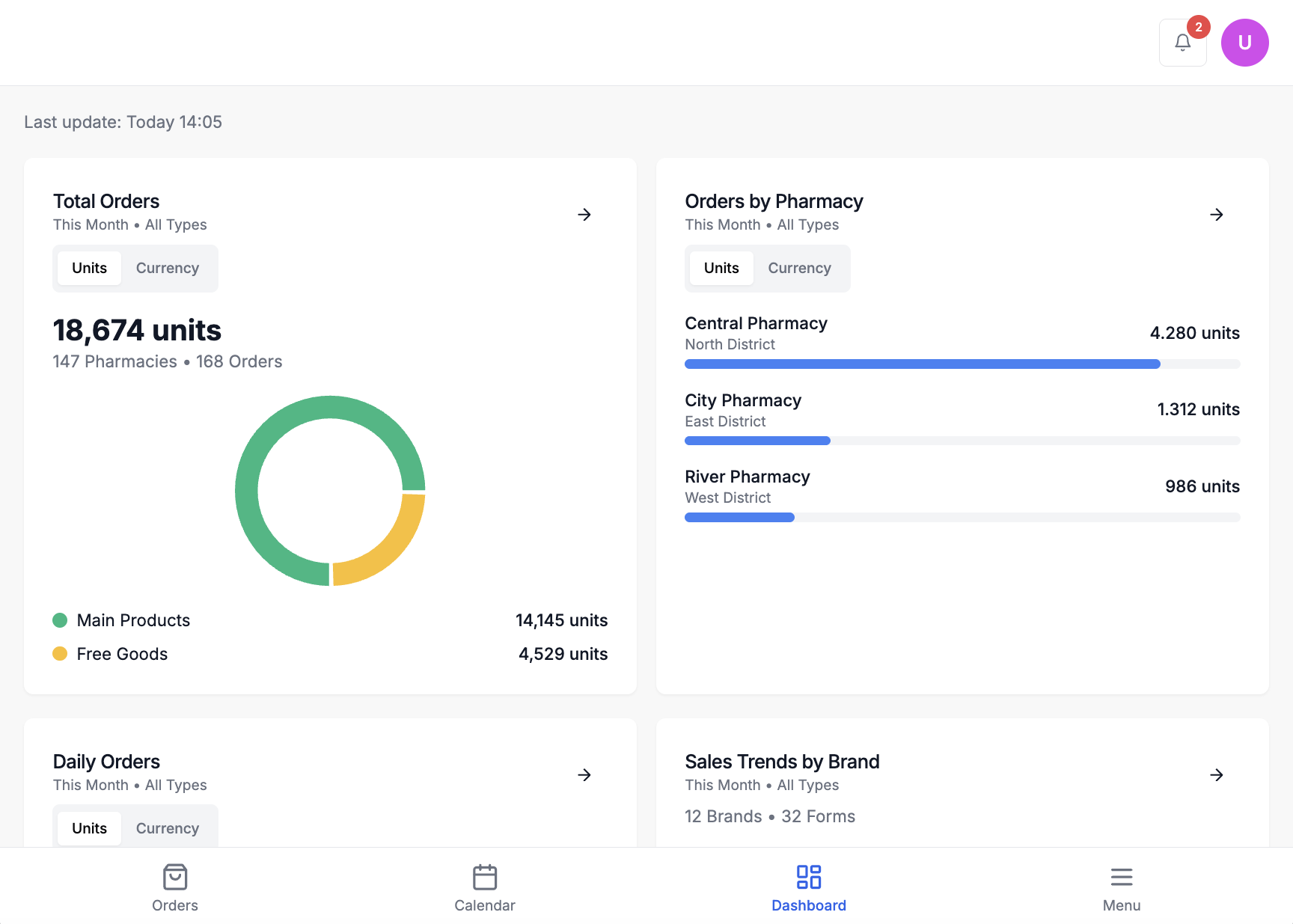
Usability Testing
Test Participants
- 2 Medical Sales Representatives
- 2 Area Sales Managers
- 1 Area Trade Managers
Key Tasks Tested
- Order entry and submission
- Order approval workflow
- Inventory monitoring
- Performance dashboard navigation
Success Metrics
- Task completion rate: 92%
- Time on task: 3-4 minutes
- Error rate: 0.5%
- User satisfaction: 4.7/5
We used various methods to gather feedback from users, including A/B testing, observation studies, and usability testings. This feedback helped us refine our designs and ensure that the final product met the needs of all user groups.
Solution
Our final solution is a comprehensive Order Management System with role-specific interfaces for each persona, streamlined workflows, and enhanced visibility into order status and inventory levels.
For Medical Sales Representatives
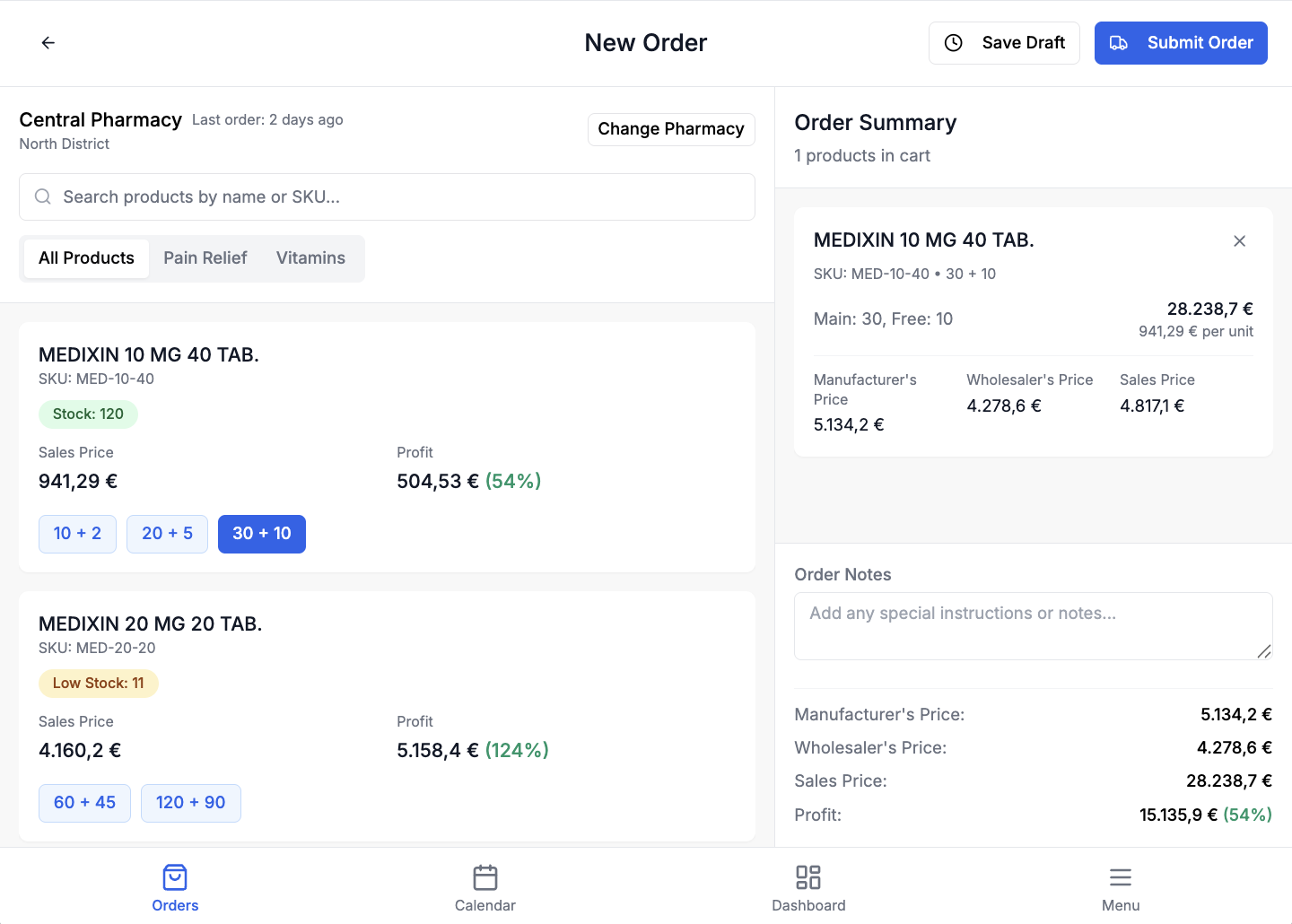
Order Entry Page
Key Features
- Pharmacy History Integration: Instant access to purchase history during pharmacy selection
- Campaign Recommendations: Intelligent promotion suggestions based on pharmacy profile
- Nearby Opportunities Map: Geolocation-based pharmacy finder with revenue potential indicators
For Area Sales Managers

Order Approval Page
Key Features
- Detailed Request Inspection: Comprehensive view of request details including product information, quantities, and justification reasons
- MSR Performance Context: Quick access to MSR information and request history to inform decision-making
- Approval Metrics: Visual representation of approval rates, processing times, and decision patterns
For Area Trade Managers
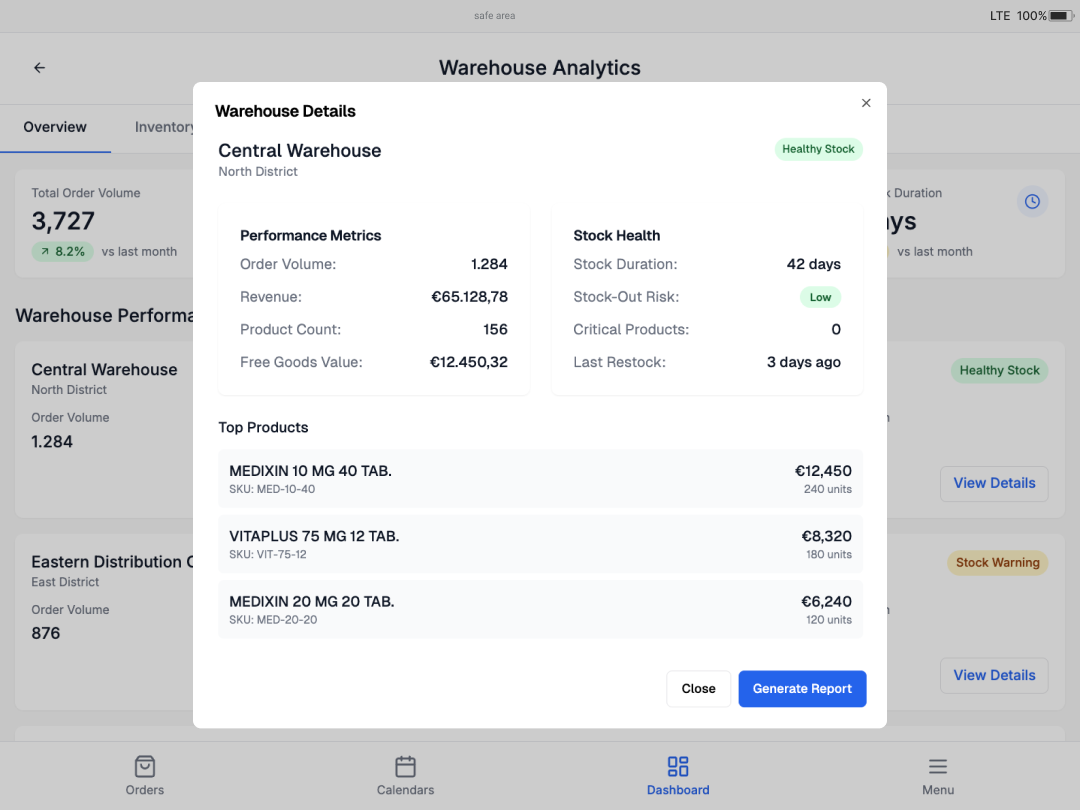
Warehouse Analytics Dashboard
Key Features
- Warehouse-Specific Reporting: Detailed metrics on order volume, product mix, and revenue by warehouse
- Inventory Tracking: Real-time visibility into stock levels with predictive stock-out warnings
- Free Goods Monitoring: Dedicated tracking for promotional items and free goods distribution
- Stock Duration Forecasting: Predictive analytics for inventory planning and optimization
Results & Impact
Key Metrics
42%
Reduction in order processing time
68%
Decrease in order errors
4.7/5.0
User satisfaction rating
Business Impact
- Increased Efficiency: MSRs now complete orders in 3-4 minutes compared to the previous 8.5 minutes
- Improved Accuracy: Order error rate reduced from 12% to less than 4%
- Enhanced Visibility: User satisfaction with system visibility increased from 65% to 89%
User Feedback
"The team dashboard gives me instant visibility into my team's performance. The approval workflow is much more efficient now."
"Having warehouse-specific analytics has transformed how we manage inventory and distribution. We can now be much more proactive."
Lessons Learned
What Worked Well
- Role-based interface approach
- Iterative testing with actual users
- Visual analytics for decision making
Challenges Faced
- Balancing complexity vs. simplicity
- Integration with legacy systems
- Offline functionality requirements
- Varying technical proficiency of users
Key Takeaways
- Early user involvement is critical
- Context-specific interfaces improve efficiency
- Data visualization enhances decision making
- Continuous feedback loops drive improvement
Made it to the end? The story doesn’t end here, stay tuned for my upcoming projects!